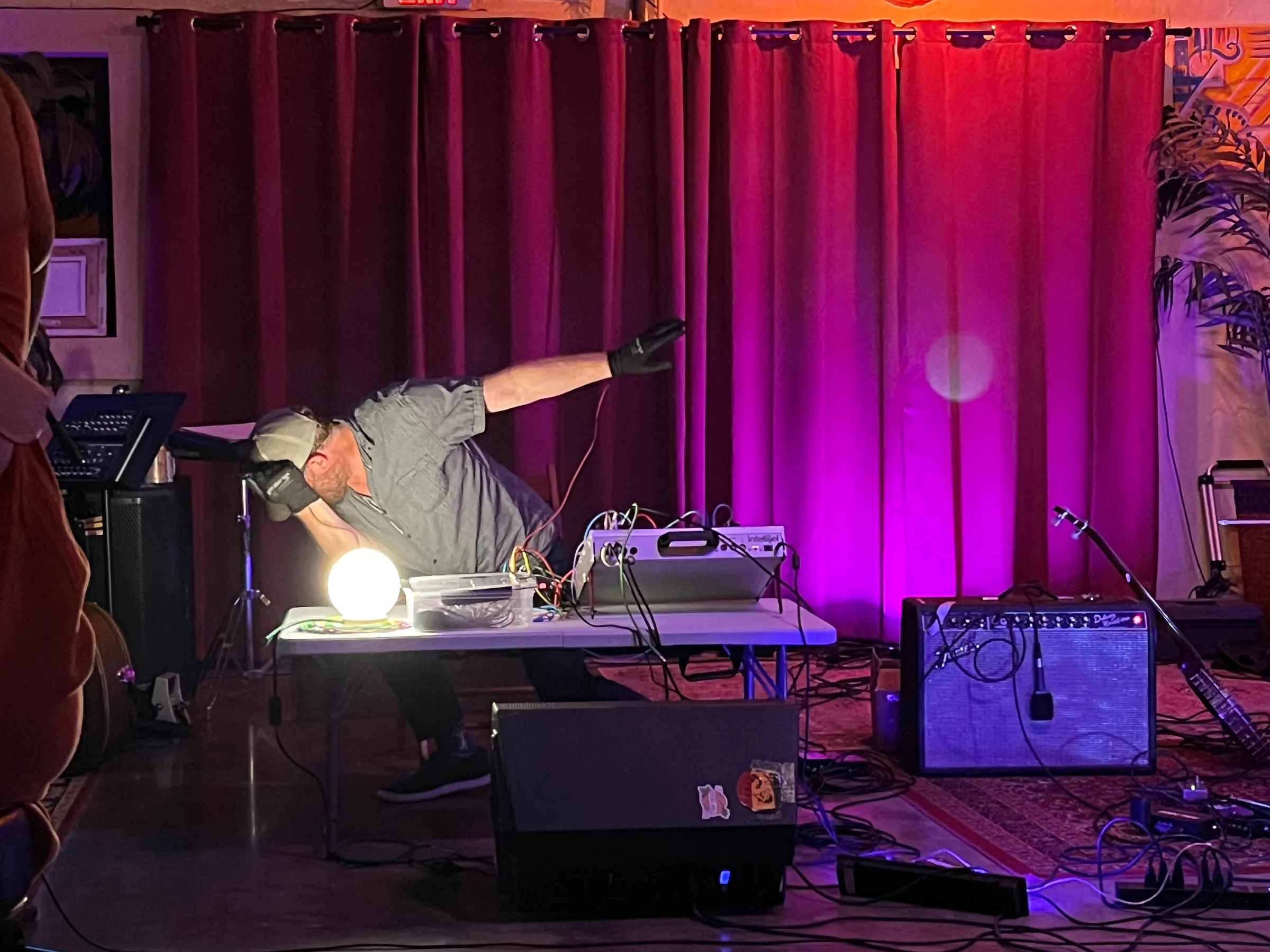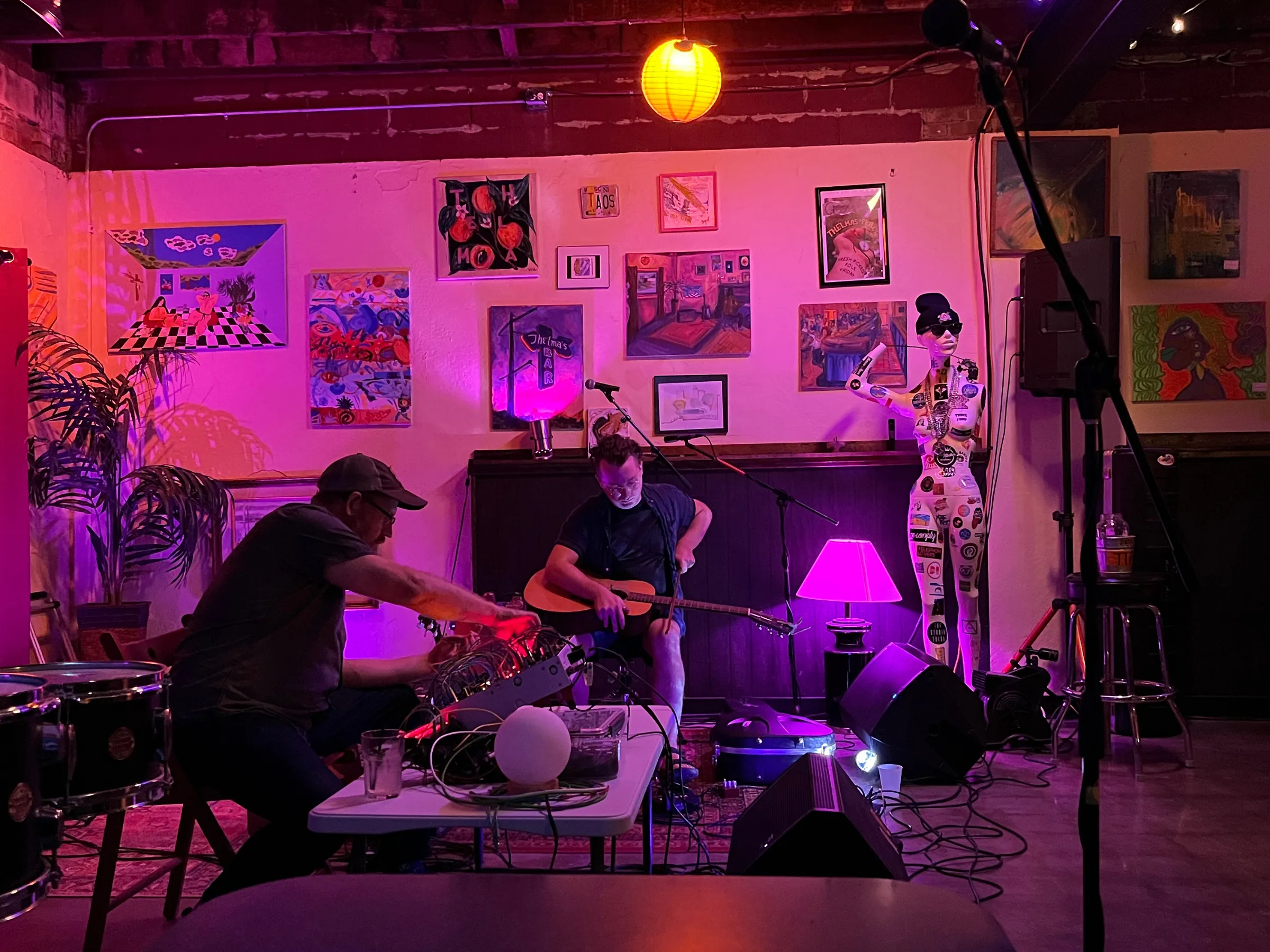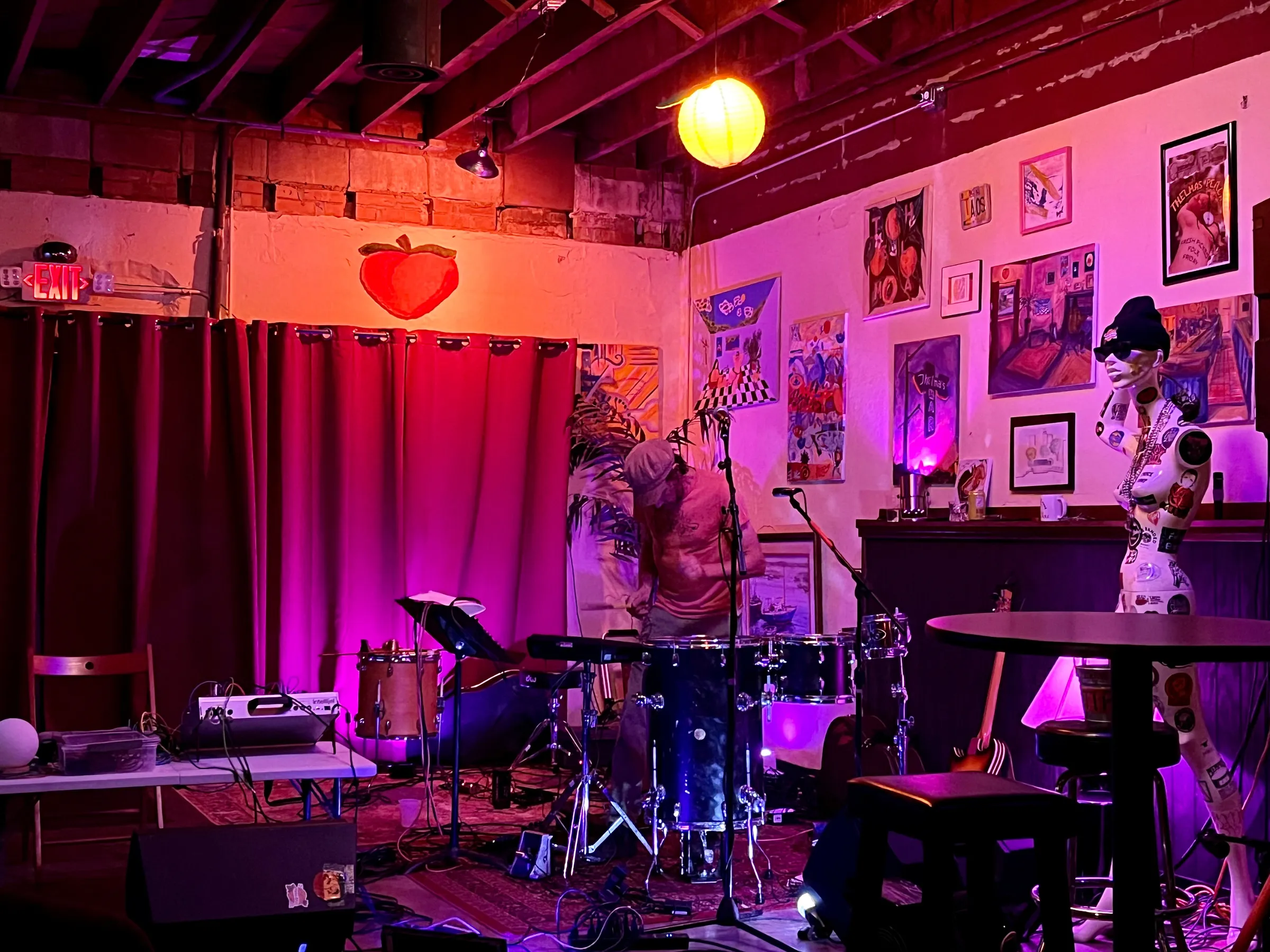
DABNAP + Pete Tomshany
Thelma’s Peach
July 15, 2023
Like mystery greens creeping up through the cracks in the concrete, experimental music is emerging as one of the most exciting, surprising, unhinged, weirdly joyful forms of art in Tulsa. For me, it’s the sound of the very-present moment: the voice of the life that lies just under the surface of what we can make sense of, what’s smooth and glossy and untroubled. It’s not new here — local labels like Peyote Tapes, Cult Love, and Unknown Tone have been distributing all sorts of Tulsa-made noise/electronic/ambient music for more than a decade — but never have there been so many opportunities to experience it live. If you’ve been curious to experiment with experimental music, you’re sitting in the perfect timeline.
Thelma’s Peach—a tiny venue in a vintage dive bar at the western edge of the Kendall Whittier neighborhood, where stray cats roam the nighttime streets — has become a welcoming home for this kind of exploration. (The proprietors hosted concerts in a backyard prior to taking over the bar space.) One recent night, three of Tulsa’s resident mad-scientist sonic geniuses set up in a wash of orange and purple lights for several hours of playtime in the wild spaces of sound.
Pete Tomshany started and finished his opening set with gentle, ringing guitar melodies, between which he punched out (truly punched, on standing drums and a digital pad) a series of taut, rhythmically mind-boggling tunes whose abrupt endings made me giggle. Tomshany’s music is full of delight and complexity, virtuoso percussion and dada-esque vocals. (One song had him repeatedly shouting “RYAN??”) Linking his voice and breathing through a mic to the wild array of sounds he’d cooked up in that drum pad, he broke open the rock of rhythm to reveal sparkling dark geodes inside — then shut it again just as quickly, leaving me with a pocket full of little treasures I could take home and explore.

A duo called DABNAP followed (the name consists of the initials of the musicians, David Alan Broome and Nathan Alexander Pape). Pape led the set with a 20-minute journey on steel-string acoustic guitar, during which a single musical idea got generated, regenerated, cracked, shoved, sprung, and undone as he traveled deeper into improvisational space. Jagged, weighted, singing — in Pape’s hands and flow-state imagination, this guitar was a voice that seemed to carry all of organic life’s experience inside it.
Broome (a member of the New York-based Ensemble Pamplemousse) followed with an iteration of his current experiments in linking sound with light. Sitting at a table next to a modular synth and a little lamp, wearing dark glasses and dark gloves, he sipped a drink, meandered around, covered and uncovered his face with his hands, reached across and hung out for a while, leaned way back in his chair with his eyes to the ceiling — and every time he shifted, the sound changed. Turns out the glasses and gloves are studded with invisible oscillators that pick up light from the lamp, translating the waves into sound: more light = more sonic intensity. (Full disclosure: I’ve played with this tech, and it’s a trip.) The performance was mesmerizing as the audience gradually caught on to the fact that the noises from the speakers were being modulated by his movement toward or away from the light source. Channeling music — through movement — through, like, photons? This is literally Einstein territory, disorienting and bewitching, and the ease of Broome’s casual action only heightened the surprise. After Broome’s set, Tomshany said to me, “I started to think I might make a noise if I looked down.”

At the end of the night, Pape and Broome joined forces for a nearly hour-long improvisation, with Pape on guitar and banjo and Broome on the modular synth that he plugged and unplugged wires from like an old-fashioned telephone operator. As a crackling drone hummed from the box, Pape hammered and stroked and chiseled his strings, at one point bowing them so hard with what looked like a cello bow that its fibers shredded. (Then he bowed with the wood that was left.) Sometimes it became deliciously unclear which musician was producing what sound; Broome had Pape’s instruments plugged into his synth and was able to mix their analog clang into its high-tech array as he chopped and guided his own sounds’ development. Sometimes it was Pape providing the drone and Broome creating cascades of delicate static that somehow held the same harmonic space. Sometimes Pape’s hand strummed so fast it was a literal blur, indistinguishable from the texture of electronic noise.
And sometimes I closed my eyes, stopped trying to follow the where and how and what, and just let it all wash over me like an oceanic wave. Bits of flotsam, swaths of seaweed, artifacts, memories, the wild unknown — it’s all in there in this music. We are too.
What’s next at Thelma’s Peach: Manta Rays / Evan Hughes / Haley J. Parker / Zac Ophus, Sat. July 22.
Where I’m going next: Phantom Limb: Mixed Media Works by Zach Litwack at Liggett Studio.






